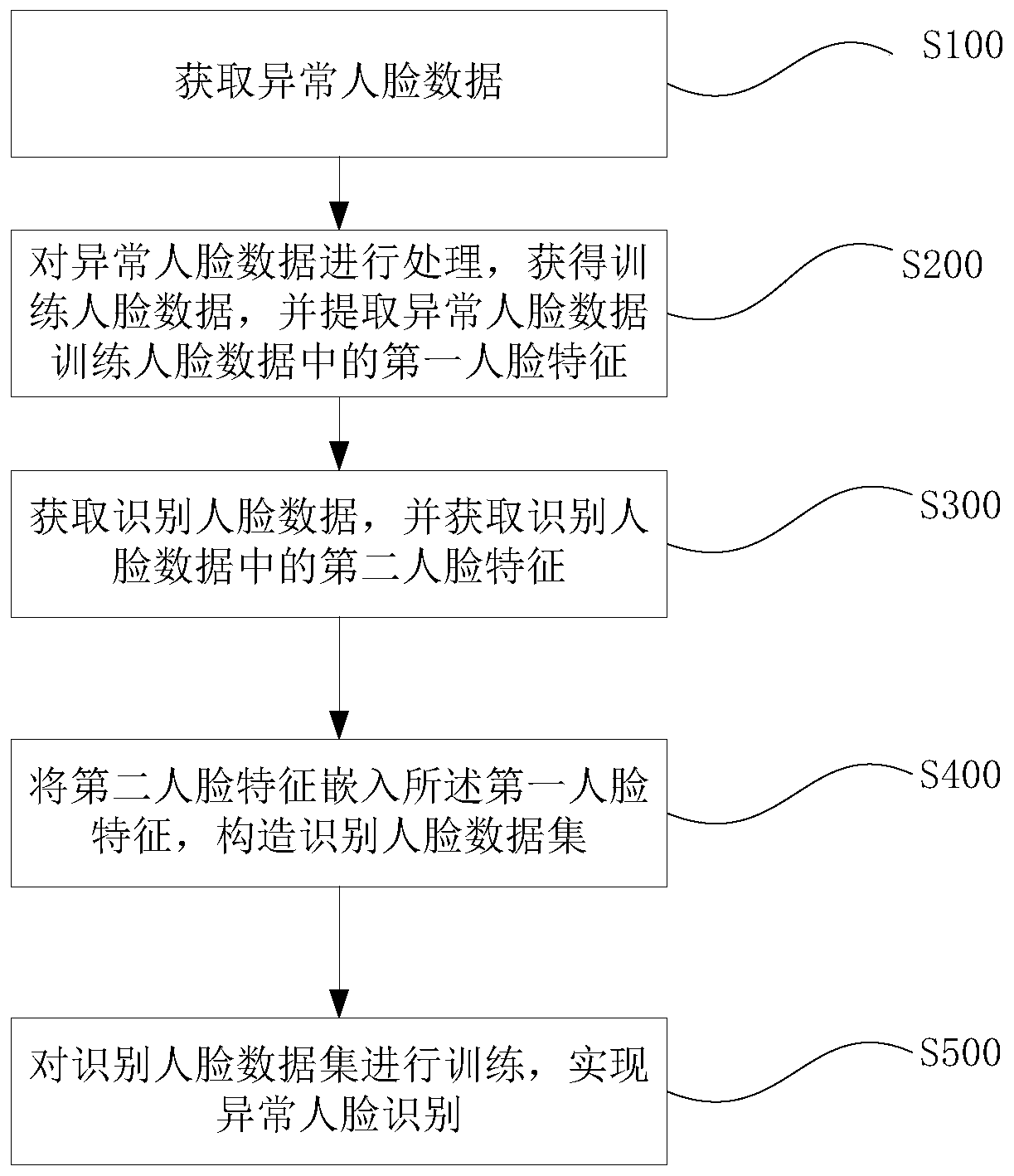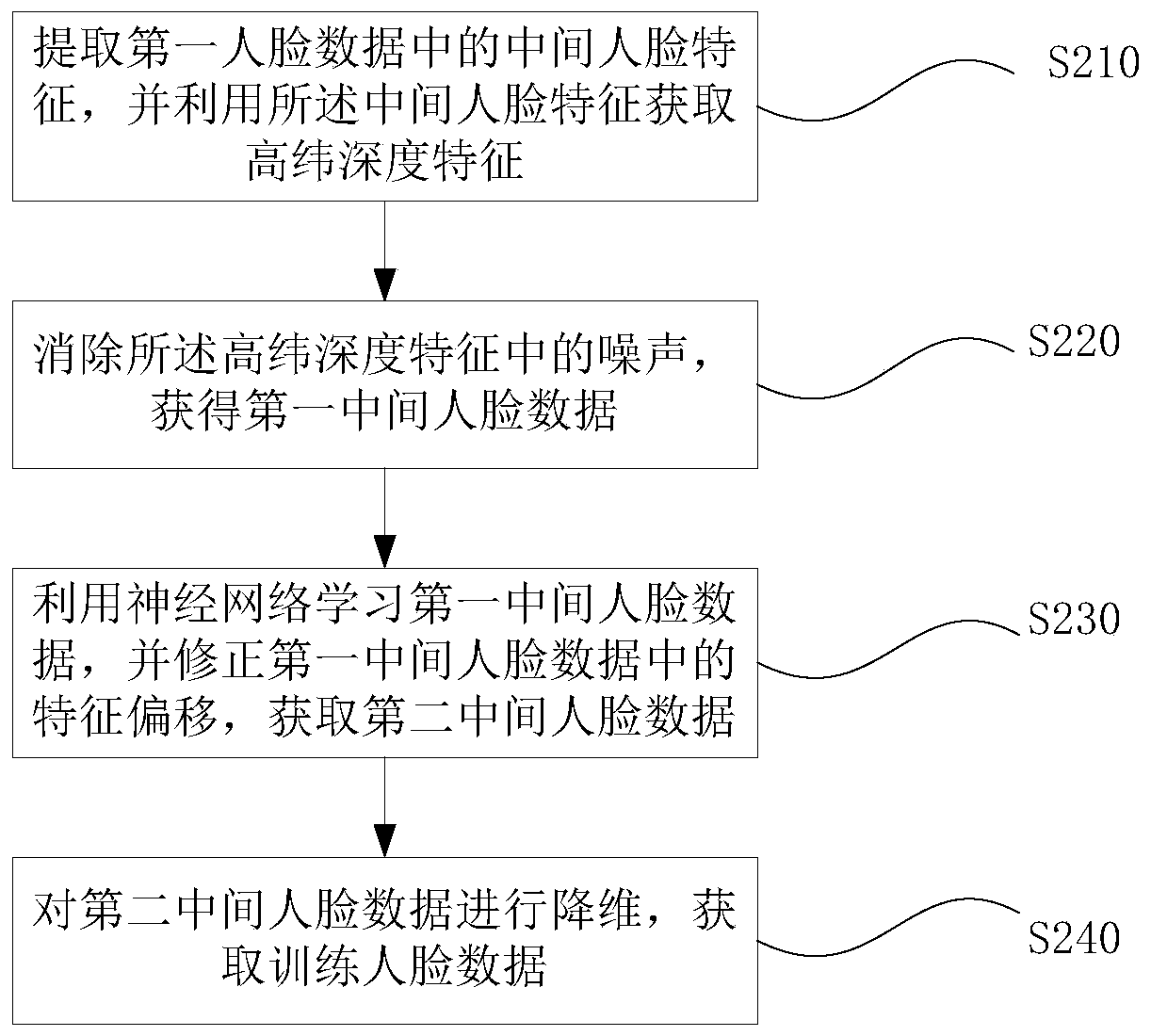Abnormal face recognition method, abnormal face recognition device, abnormal face recognition equipment and storage medium
A recognition method and face recognition technology, applied in the field of face recognition, can solve the problems of recognition and verification failure, abnormal face falling into error, difficult to extract by neural network, etc., to achieve the effect of accurate abnormal face recognition
- Summary
- Abstract
- Description
- Claims
- Application Information
AI Technical Summary
Problems solved by technology
Method used
Image
Examples
Embodiment 1
[0055] refer to figure 1 , shows a schematic flowchart of a method for identifying abnormal faces in an embodiment of the present invention. It specifically includes steps:
[0056] S100: Obtain abnormal face data; in this embodiment, the abnormal face data is abnormal face data, wherein the abnormal conditions include but are not limited to: poor lighting, occlusion, deformation (laughing, crying), etc.
[0057] S200: Process the abnormal face data, obtain the training face data, and extract the first face feature in the abnormal face data training face data; in this step, through the deep face recognition with stronger discrimination ability The device VGGFace describes the face features, and finally obtains the first face feature. The first face feature is a high-dimensional deep feature, which strengthens the face features in the abnormal face data, thereby improving the quality of the abnormal face data. The ability to express feature data improves the accuracy of the n...
Embodiment 2
[0067] Such as figure 2 Shown, in one embodiment, provides such as figure 1 A detailed process step of step S200 in the illustrated embodiment, in this embodiment, step S200 includes but not limited to the following steps:
[0068] S210: Extract the intermediate face features in the normal face data, and use the intermediate face features to obtain high-dimensional depth features; in this step, the deep face recognizer VGGFace describes the intermediate face features in the abnormal face data, and obtains high-dimensional features depth features. In other embodiments, for example, the dlib model and the hamtam12 model can also be used to identify human features.
[0069] S220: Eliminate the noise in the high-dimensional depth features, and obtain the first intermediate face data. In the abnormal face data, due to various factors, the face features are partially missing and contain part of the noise. In some embodiments, the LLE projection is used to eliminate this. Part of...
Embodiment 3
[0074] refer to image 3 , embodiment 3 on the basis of embodiment 2, further provides the second intermediate face data to carry out dimensionality reduction, obtains the method for training face data, this method comprises the steps:
[0075] S241: Obtain the number of neighborhoods in the second intermediate face data; in this step, firstly, it is necessary to determine the size of the neighborhood, that is, how many field samples are needed to linearly represent the second intermediate face data, and the number of field samples is K. In a specific embodiment, the k nearest neighbors of a sample may be selected by a distance metric such as Euclidean distance.
[0076] S242: Determine the linear relationship between the neighborhoods; in this step, determining the linear relationship of the second intermediate face data means determining the second intermediate face data X i and the linear relationship between the k nearest neighbors, that is, to find the weight coefficien...
PUM
 Login to View More
Login to View More Abstract
Description
Claims
Application Information
 Login to View More
Login to View More - R&D
- Intellectual Property
- Life Sciences
- Materials
- Tech Scout
- Unparalleled Data Quality
- Higher Quality Content
- 60% Fewer Hallucinations
Browse by: Latest US Patents, China's latest patents, Technical Efficacy Thesaurus, Application Domain, Technology Topic, Popular Technical Reports.
© 2025 PatSnap. All rights reserved.Legal|Privacy policy|Modern Slavery Act Transparency Statement|Sitemap|About US| Contact US: help@patsnap.com



